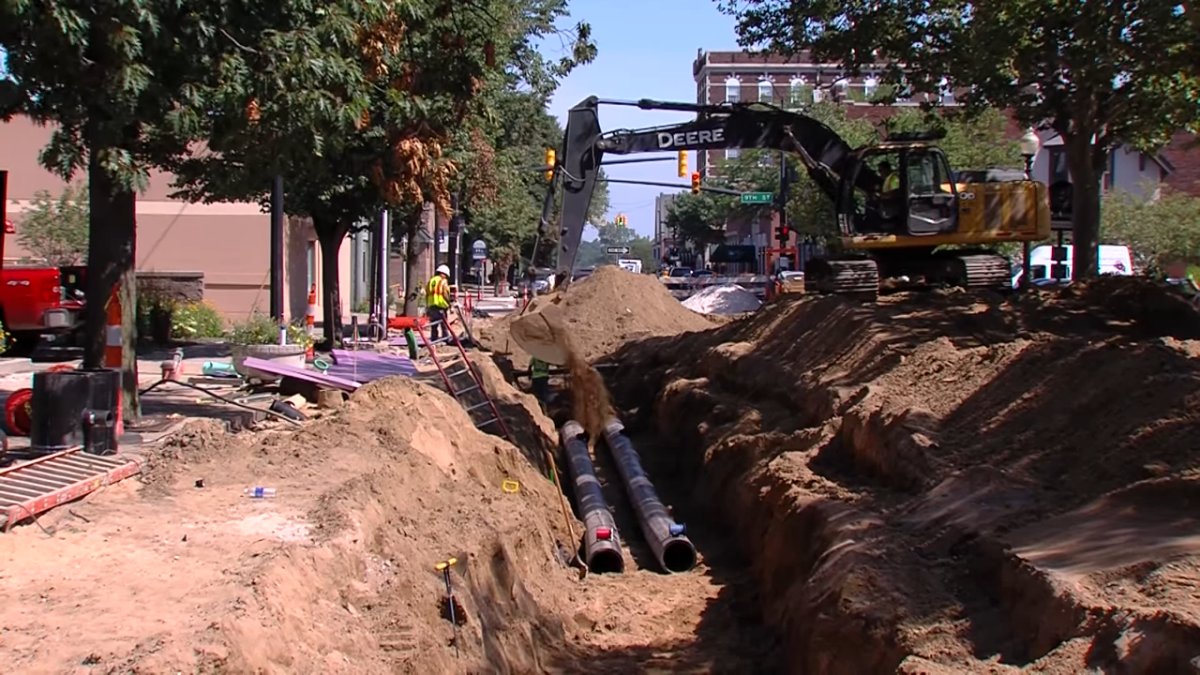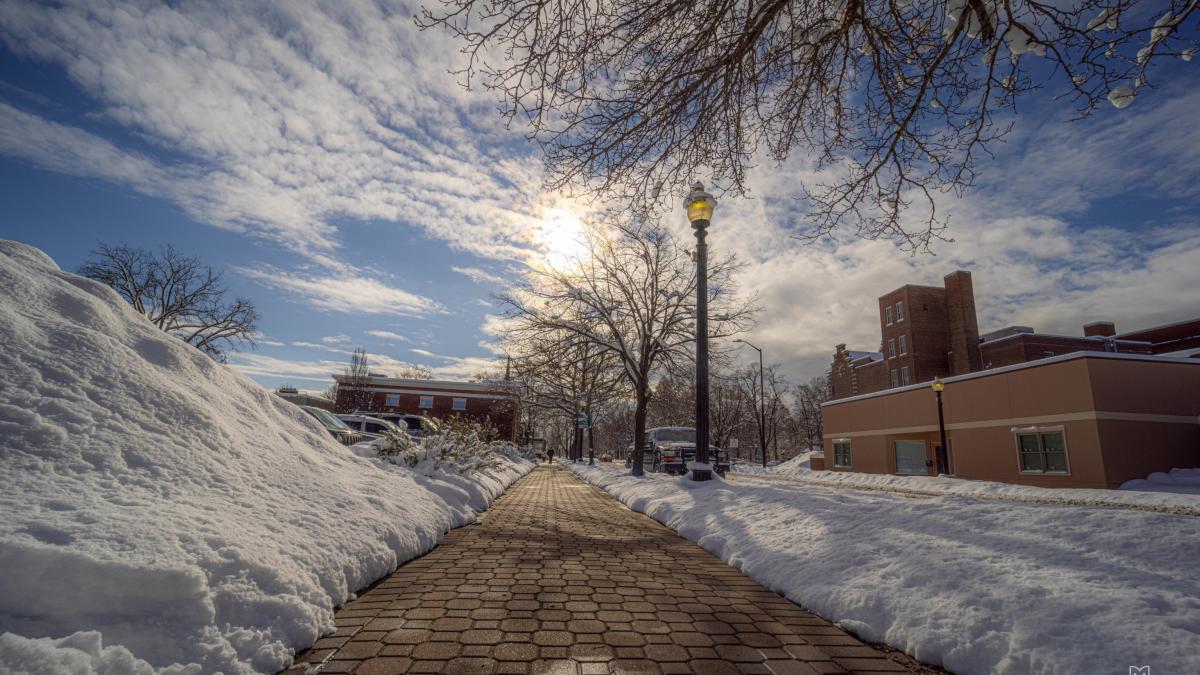Meet Jeff Genova, the Downtown Development Authority (DDA) Coordinator for Downtown Holland. If you’ve spent time downtown, you’ve likely seen Jeff out and about—walking the streets, chatting with locals, and ensuring everything runs smoothly. Jeff doesn’t just work in Downtown Holland; he’s dedicated to making it the best it can be.
Oh, and he’s also the go-to expert on Holland’s famous snowmelt system! With winter just around the corner, we asked Jeff—our very own "Snowmelt Guru"—to share the inside scoop. How does the system work? How many miles of tubing keep our sidewalks warm and clear? Jeff has all the answers!
What is snowmelt/how does it work?
Snowmelt is the system in Downtown Holland that we use to keep our sidewalks and streets free of snow during the winter months. It works by having heated water pass through distribution pipes and valves to a system of ¾” tubes spaced every 6” underneath streets and sidewalks.
How is the system activated? Are there different regions?
The system is always on. In the summertime it is on at a very low level. Then in the fall when the conditions become conducive for snow the system is turned up by the BPW to the proper amount of circulation to melt snow. There are different regions of the snowmelt. The regions are used for repairs. We can shut down a small section to do repairs without having to shut down the entire system.

How did it begin?
The late 80’s and 90’s brought a need to revitalize Downtown Holland.
Downtown Holland business owners rallied together with the City and the BPW to develop a plan that focused on parking, pedestrian friendly streets and new utilities.
Holland native and Prince Corporation founder, Edgar Prince, approached the city about an idea he had seen used in Europe – a snowmelt system for the streets and sidewalks. The idea was bold but was backed by the City, BPW and business owners.
Prince even put up the first $250,000 of his own money toward the $1.1 million project.
Why did it begin?
In the late 1980’s a new mall was built on the east side of town along Hwy 31. Downtown was nervous about the loss of business to the mall stores. So, they came up with a plan for snowmelt to make Downtown unique and inviting year round to shoppers.
Why is it called snowmelt?
Because it melts snow and ice on the sidewalks and roads.
When did Holland, MI get snowmelt?
Holland, Michigan, installed its downtown snowmelt system in 1988. It was part of a larger infrastructure project to make the city more pedestrian-friendly during the winter months by keeping streets and sidewalks clear of snow and ice. The project started late spring and was finished on December 4th the day before the first measurable snowfall for that year.
How is the system and maintenance funded?
Rather than charging all residents for the snowmelt system, the city places an assessment on businesses and residents that directly benefit from it (snowmelt touches their property); the rate this year was 52 cents per square foot.

How many miles of tubing and/or how many miles of paved walkways/streets are there?
Total area of road and sidewalk melted is approx. 1,050,000 square feet or about 24 acres or 8 miles. To put that into perspective, the City of Holland is melting an area equivalent to a little over 18 football fields.
If I put my hands on the pavement, can I feel warmth?
Yes, you can! The sidewalks are slightly warm to touch but not hot by any stretch of the imagination. If you touch a snowmelt paver when snowmelt is fully activated and then touch the sidewalk that is not part of snowmelt you can feel the temperature difference.
Who manages the snowmelt system?
The Downtown office of the City of Holland and the Board of Public Works. The BPW regulates the water flow and keeps the lines flowing. The DDA works with problem solving and getting smaller issues resolved.
Where can I see how snowmelt works?
There is a great display at the Holland Energy Park that talks about where the heated water comes from and how it helps make the power plant more efficient. This display can be viewed when the Holland Energy Park has an open house, or you can set up a group visit through them.
 Why doesn’t the whole city have snowmelt?
Why doesn’t the whole city have snowmelt?
Two reasons are that the cost of installing that much snowmelt would be enormous and the Holland Energy Park does not have the capacity to heat that much snowmelt. The Holland Energy Park has enough current capacity to grow the system by about 50% more than its current size.
How does the community take advantage of the snowmelt system? (runners, walkers, events..)
Every day in the winter we a multitude of runners and walkers that use the snowmelt system as a dry safe place to get their run or walk in. Most but not all walk or run in groups, and some bring their dogs along to join them. With almost 8 miles of dry heated pavement, they don’t have to worry about slipping on snow and ice while getting the exercise in. We also have a couple of 5k races that happen during the winter entirely along the snowmelt. So, no matter what the conditions (well, except extreme conditions) the racecourse is free from snow and ice. Having snowmelt also allows downtown to have other events during the winter like Holland on Ice, Girlfriends Weekend, the Parade of Lights and the Holland Kerstmarkt. All these events are even more popular with the attendees not having to worry about snow and ice on the streets and walkways.

What maintenance is required?
There is some regular maintenance of the snowmelt system like testing the valves along the system to make sure that they are working. We also flush the system with acid to clean out any scale build up in the lines. The system is pretty maintenance free unless we have a break in a line or a valve breaks then those would need to be replaced.
What is the longevity?
The pipes and valves of the snowmelt system were designed to last 100 years. We have done some replacements and upgrades to small areas to make them last longer. But most of the system should be good until the year 2089 if all goes well. Then the City will have to make plans for replacing parts and upgrading the system.
Are there expansion plans? If so, can the community provide input into priority areas?
There aren’t any plans to expand currently but we always discuss with property owners looking to build in the Downtown the possibility of adding snowmelt to their property is they do not already have snowmelt, and we can connect the system. That way we can split costs with the developer.

*all photos provided by the City of Holland
